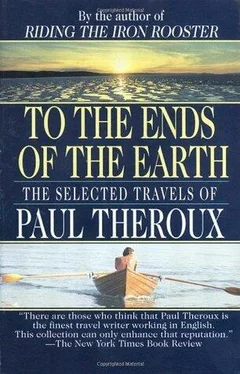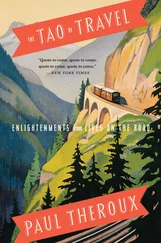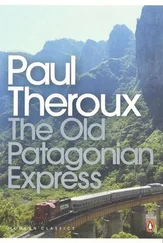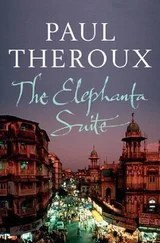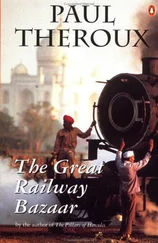Paul Theroux - To the Ends of the Earth - The Selected Travels
Здесь есть возможность читать онлайн «Paul Theroux - To the Ends of the Earth - The Selected Travels» весь текст электронной книги совершенно бесплатно (целиком полную версию без сокращений). В некоторых случаях можно слушать аудио, скачать через торрент в формате fb2 и присутствует краткое содержание. Год выпуска: 1994, Издательство: Ivy Books, Жанр: Путешествия и география, на английском языке. Описание произведения, (предисловие) а так же отзывы посетителей доступны на портале библиотеки ЛибКат.
- Название:To the Ends of the Earth: The Selected Travels
- Автор:
- Издательство:Ivy Books
- Жанр:
- Год:1994
- ISBN:нет данных
- Рейтинг книги:4 / 5. Голосов: 1
-
Избранное:Добавить в избранное
- Отзывы:
-
Ваша оценка:
- 80
- 1
- 2
- 3
- 4
- 5
To the Ends of the Earth: The Selected Travels: краткое содержание, описание и аннотация
Предлагаем к чтению аннотацию, описание, краткое содержание или предисловие (зависит от того, что написал сам автор книги «To the Ends of the Earth: The Selected Travels»). Если вы не нашли необходимую информацию о книге — напишите в комментариях, мы постараемся отыскать её.
To the Ends of the Earth: The Selected Travels — читать онлайн бесплатно полную книгу (весь текст) целиком
Ниже представлен текст книги, разбитый по страницам. Система сохранения места последней прочитанной страницы, позволяет с удобством читать онлайн бесплатно книгу «To the Ends of the Earth: The Selected Travels», без необходимости каждый раз заново искать на чём Вы остановились. Поставьте закладку, и сможете в любой момент перейти на страницу, на которой закончили чтение.
Интервал:
Закладка:
“It feels like a foreign country,” Chinese friends of mine confided to me. They were bewildered by the old-fashioned habits and clothes, and by the incomprehensible rituals of Tibetan Buddhism, celebrating the sexual mysticism of the tantric rites, and the hugging and fornicating statues illustrating the mother-father principle of yabyum, and the big, toothy, goggling demons that Tibetans see as protectors. Even with the Chinese watching closely and issuing decrees and building schools and initiating public works, Lhasa is a medieval-seeming place, just like Europe in the Middle Ages, complete with grinning monks and grubby peasants and open-air festivals and jugglers and tumblers. Lhasa is holy, but it is also a market town, with pushcarts and stacked-up vegetables and dirty, air-dried cuts of yak that will keep for a year (grain keeps for fifty years in the dry Tibetan climate). The most medieval touch of all is that Tibet has almost no plumbing.
The pilgrims hunker and prostrate themselves all over Lhasa, and they shuffle clockwise around every shrine. They flatten themselves on stair landings, outside the Jokhang, and all around the Potala. They do it on the road, the riverbank, the hillsides. Being Tibetan Buddhists they are good-humored, and because they are from all over Tibet, Lhasa is their meeting place — they enrich the life of the town and fill its markets. They come out of a devotion to the Dalai Lama, the incarnation of the Bodhisattva Avalokitesvara. They pray, they throw themselves to the ground, they strew tiny one-miao notes and barley grains at the shrines, and they empty blobs of yak butter into the lamps. The very pious ones blow horns made from human thigh bones — a femur like an oboe — or carry water in bowls made from the lopped-off top of a human skull. They venerate the various thrones and couches of the Dalai Lama in the Potala, and even his narrow Art Deco bed, his bathtub and toilet, his tape recorder (a gift from Nehru), and his radio. The Dalai Lama is worshipped as the Living God, but the pilgrims also pay homage to the images of Zong Kapa — founder of the Yellow Sect, and of the Lord Buddha, and other Dalai Lamas, notably the Fifth, whose great buildings dignify Lhasa. Pilgrims have made Lhasa a town of visitors who are not exactly strangers, and so even a real foreigner feels a sense of belonging there. Its chaos and dirt and its jangling bells make it seem hospitable.
Lhasa was the one place in China I eagerly entered, and enjoyed being in, and was reluctant to leave. I liked its smallness, its friendliness, the absence of traffic, the flat streets — and every street had a vista of tremendous Tibetan mountains. I liked the clear air and sunshine, the markets, the brisk trade in scarce antiques. It fascinated me to see a place for which the Chinese had no solution. They admitted that they had made grave mistakes in Tibet, but they also admitted that they did not know what to do next. They had not counted on the tenacious faith of the Tibetans, and perhaps they found it hard to believe that such dark, grinning people, who never washed, could be so passionate. The visiting party officials strolled around looking smug and hard to please. They were mostly on junkets. Tibet is a junketer’s paradise: a subject people, two fairly good hotels, plenty of ceremonial functions, and so far from Peking that anything goes. The Chinese reward each other with junkets and official trips — they often take the place of bonuses — and Tibet is the ultimate junket. But it is for sight-seeing. Tibet has made no economic gains at all. It is entirely dependent on Chinese financial aid. These Chinese nearly always look physically uncomfortable in Lhasa — it is the altitude, the strange food, and the climate, but it is also the boisterous Tibetans, who seem to the Chinese a bit savage and unpredictable — superstitious primitives if not outright subhuman.
The other aspect of Lhasa — and Tibet, too — is that like Yunnan it has become the refuge of hippies. They are not the dropouts I met years ago in Afghanistan and India, but mostly middle-class, well-heeled hippies whose parents gave them the air fare to China. Some of them come by bus from Nepal. They seemed harmless to me, and they were a great deal more desirable than the rich tourists for whom Lhasa was building expensive hotels and importing ridiculous delicacies — and providing brand-new Japanese buses so that groups of tourists could set out at dawn and photograph such rituals as the Sky Burial (Tibetans deal with their dead by placing them outside for vultures to eat). As Lynn Pan remarks in her analysis of recent Chinese history, The New Chinese Revolution, “it is difficult to avoid the conclusion that Tibetan culture, which has survived the worst that Maoism and force could do to stamp it out, has been left to be killed by tourism.” But I had my doubts. Tibet seemed too vast and inaccessible and strange for anyone to possess it. It looked wonderful to me, like the last place on earth; like a polar ice cap, but emptier.
Down the Yangtze
Trackers
IT WAS NEAR CHANG SHOU, ABOUT NOON ON THAT FIRST DAY, that I saw a sailing junk steered to the bank, and the sail struck, and five men leaping onto the shore with towlines around their waists. They ran ahead, then jerked like dogs on a leash, and immediately began towing the junk against the current. These are trackers. They are mentioned by the earliest travelers on the Yangtze. They strain, leaning forward, and almost imperceptibly the sixty-foot junk begins to move upstream. There is no level towpath. The trackers are rock climbers: they scamper from boulder to boulder, moving higher until the boulders give out, and then dropping down, pulling and climbing until there is a reach on the river where the junk can sail again. The only difference — but it is a fairly large one — between trackers long ago and trackers today is that they are no longer whipped. “Often our men have to climb or jump like monkeys,” wrote a Yangtze traveler, in the middle of the last century, of his trackers, “and their backs are lashed by the two chiefs, to urge them to work at critical moments. This new spectacle at first revolts and angers us, but when we see that the men do not complain about the lashings we realize that it is the custom of the country, justified by the exceptional difficulties along the route.” Captain Little saw a tracker chief strip his clothes off, jump into the river, then roll himself in sand until he looked half-human, like a gritty ape; then he did a demon dance, and howled, and whipped the trackers, who — scared out of their wits — willingly pulled a junk off a sandbank.
The trackers sing or chant. There are garbled versions of what they say. Some travelers have them grunting and groaning, others are more specific and report the trackers yelling, “Chor! Chor!”—slang for “Shang-chia” or “Put your shoulder to it.” I asked a boatman what the trackers were chanting. He said that they cried out, “Hai tzo! Hai tzo!” over and over again, which means “Number! Number!” in Szechuanese, and is uttered by trackers and oarsmen alike.
“When we institute the Four Modernizations,” he added — this man was one of the minuscule number who are members of the Chinese Communist party—“there will be no more junks or trackers.”
One day I was standing at the ship’s rail with a man who encouraged us to call him Big Bob Brantman. We saw some trackers, six of them, pulling a junk. The men skipped from rock to rock, they climbed, they hauled the lines attached to the junk, and they struggled along the steep rocky towpath. They were barefoot.
Brantman winced. It was a wince of sagacity, of understanding: Yes, it said, I now see what this is all about. Then he spoke, still wincing a little.
Читать дальшеИнтервал:
Закладка:
Похожие книги на «To the Ends of the Earth: The Selected Travels»
Представляем Вашему вниманию похожие книги на «To the Ends of the Earth: The Selected Travels» списком для выбора. Мы отобрали схожую по названию и смыслу литературу в надежде предоставить читателям больше вариантов отыскать новые, интересные, ещё непрочитанные произведения.
Обсуждение, отзывы о книге «To the Ends of the Earth: The Selected Travels» и просто собственные мнения читателей. Оставьте ваши комментарии, напишите, что Вы думаете о произведении, его смысле или главных героях. Укажите что конкретно понравилось, а что нет, и почему Вы так считаете.
